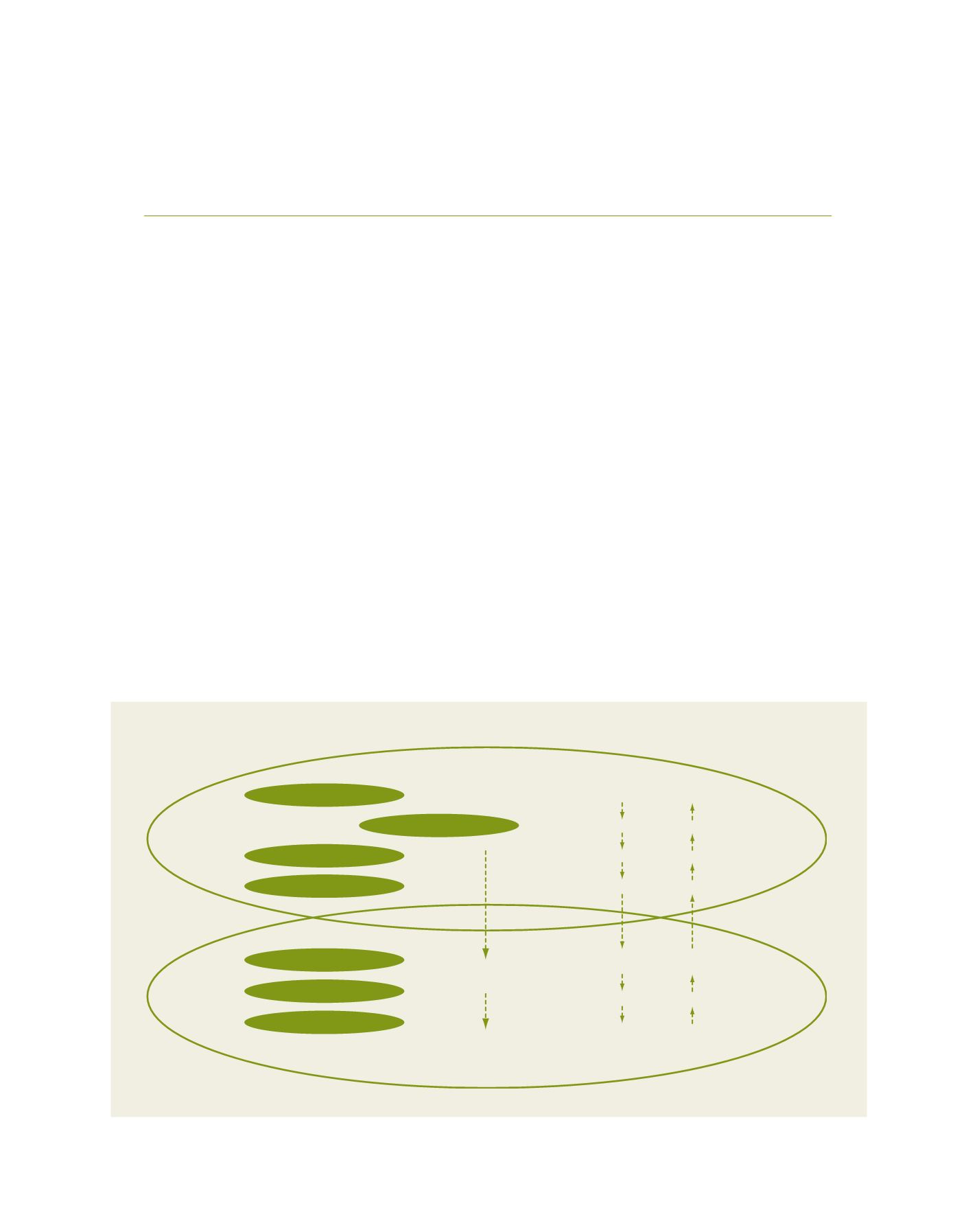

[
] 240
Developing community water services
and cooperation in Finland and the South
Tapio S. Katko, UNESCO Chair in Sustainable Water Services, Tampere University of Technology;
and Antti Rautavaara, Senior Water Advisor, Ministry for Foreign Affairs
I
n water management it is important to distinguish between
water resources and water services. Water use for various
purposes is managed at several levels – from international
treaties and transboundary rivers and groundwater areas to
water courses of various sizes. Some 270 transboundary rivers
flow and 450 groundwater areas are located in at least two
sovereign countries.
In this article, water services refer to community water supply, sewer-
age and, to some extent, stormwater management. These are typically
managed at lower levels: from the inter-municipal level to cities and
communities, villages and on-site systems. These systems can also be
linked to each other. Water services involve a large number of stake-
holders: citizens, communities, municipal decision makers, water
utilities, professional and other associations, educational and training
institutions, ministries and other authorities, and research sponsors.
The challenge is how to promote smooth collaboration between these
various partners and find appropriate roles for each of them.
In Finland, municipalities are in charge of provid-
ing water services while municipality-owned utilities
mainly produce the actual services. There is also a long
tradition of smaller, water cooperative-run systems in
rural areas. The experience gained from a diversity of
options is perhaps one of Finland’s major strengths and
is reflected in the activities supported by the Finnish
Government in developing economies, especially Africa.
Finnish development cooperation and policy
Finland’s human rights-based development policy and
cooperation focus on four priority areas: a democratic
and accountable society that promotes human rights; an
inclusive green economy that promotes employment;
sustainable management of natural resources and envi-
ronmental protection; and human development. The
water sector, with all its levels and sub-sectors, fits well
within this policy frame.
W
ater
C
ooperation
, S
ustainability
and
P
overty
E
radication
WATER RESOURCES MANAGEMENT
WATER SERVICES MANAGEMENT
“Global Village”
Transboundary waters
States
Regions
Municipalities
Management at the
lowest appropriate level
Global policy frameworks
Transboundary commissions
Central ministries
River basin bodies
Water and wastewater
undertakings
User associations
On-site systems
Property owner
Communities
Households
Multilevel governance and relations between water resources and water services
Source: Pekka Pietilä


















